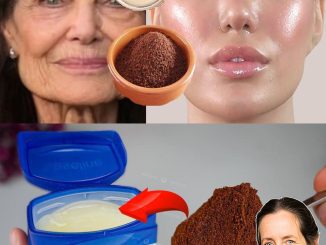In many gardens, along shaded fences, or creeping through wild meadows, you may spot a humble plant with purple-tinted tops and soft fuzzy leaves. Most people walk right past it, mistaking it for a weed. But what if we told you this common plant holds surprising power to support your heart, blood vessels, and overall circulation?

Purple dead nettle, known scientifically as Lamium purpureum, is a member of the mint family. Despite its “nettle” name, it doesn’t sting like the infamous stinging nettle. Instead, it offers a wide array of healing properties and gentle nourishment for the body. This wild herb has long been used in traditional herbalism and is now gaining new attention for its potential to naturally support cardiovascular wellness.
The beauty of purple dead nettle is in its simplicity. It grows abundantly, requires no expensive processing, and can be used in multiple forms—from fresh leaves in smoothies to dried teas and even tinctures. For those seeking ways to enhance their circulatory health without synthetic chemicals, purple dead nettle might be the quiet herbal ally you’ve been missing.
Let’s take a closer look at how this wild herb works, why it’s beneficial for your heart, and how you can easily incorporate it into your daily routine.
How Purple Dead Nettle Supports the Heart and Circulation
Purple dead nettle contains a unique combination of antioxidants, anti-inflammatory agents, vitamins, and plant-based compounds that nourish and protect the cardiovascular system. While not a replacement for medical treatment, its regular use may provide gentle but meaningful support.
Improves Blood Circulation Naturally
One of the most valuable benefits of purple dead nettle is its ability to promote healthy blood flow. Many of the issues with modern circulation stem from inflammation and poor vessel elasticity. Purple dead nettle helps by calming internal inflammation and making blood vessels more responsive. This allows for improved delivery of oxygen and nutrients to the cells and reduces strain on the heart.
People who experience cold extremities, sluggish circulation, or mild swelling may benefit from the circulation-enhancing effects of this herb over time.

Helps Maintain Healthy Cholesterol Levels
Oxidative stress is one of the leading causes of cholesterol imbalance and arterial plaque buildup. When the body is under stress from processed foods, pollution, or internal inflammation, cholesterol begins to oxidize and stick to the arterial walls. This can lead to serious cardiovascular concerns.
Purple dead nettle is not a statin drug, but its high antioxidant content may help your body defend against oxidative damage. By reducing the oxidative burden in your bloodstream, the herb indirectly supports better cholesterol regulation and a lower risk of arterial hardening.
Strengthens and Protects Blood Vessels
Inside purple dead nettle are flavonoids and polyphenols—compounds known for their role in vascular health. These substances help strengthen the inner lining of blood vessels, improve their flexibility, and prevent stiffness.
Flexible, strong vessels mean that your blood pressure can stay within a healthy range, and your heart doesn’t have to work as hard to circulate blood. Over time, supporting your vascular system in this way can lead to better resilience against heart-related problems.
Provides Powerful Antioxidant Support
Free radicals are unstable molecules that attack the cells in your body. They come from sources like air pollution, UV rays, cigarette smoke, and even stress. When these radicals target your cardiovascular system, they accelerate aging and damage the delicate tissues of your heart and blood vessels.
Purple dead nettle contains antioxidants like vitamin C, quercetin, and a range of polyphenols that help neutralize these dangerous molecules. This protective effect helps the body stay more youthful from within and may reduce long-term cardiovascular damage.

Reduces Inflammation Without Harsh Side Effects
Chronic inflammation is now recognized as a hidden root of many modern diseases—including heart disease and high blood pressure. Fortunately, purple dead nettle provides gentle anti-inflammatory support without the harshness of pharmaceuticals.
Its natural compounds work quietly behind the scenes, calming irritated tissues and allowing the body’s healing processes to function more efficiently. This makes it an excellent herb for people who want a subtle, long-term approach to heart care.
Easy Ways to Use Purple Dead Nettle at Home
This plant may be wild, but it’s far from difficult to use. In fact, you can easily harvest it yourself from clean, pesticide-free areas and prepare it in several ways to support your health.
Purple Dead Nettle Tea
Perhaps the most common method, tea allows you to draw out the soothing, antioxidant properties of the herb. Simply add one to two teaspoons of dried leaves—or a small handful of fresh leaves—to hot water. Let it steep for about 10 to 15 minutes, strain, and sip.
Drink one to two cups per day as a nourishing ritual for your circulatory and immune system.

Green Smoothie Addition
If you’re a fan of morning green smoothies, consider tossing in a few clean, young purple dead nettle leaves. This method preserves delicate nutrients like vitamin C and flavonoids that might otherwise be lost in heat. Blending it with fruits like banana or mango helps mask the earthy flavor and provides a nutrient-dense boost to start your day.
Powder for Everyday Use
For those who like consistency, turning dried purple dead nettle into powder is a great option. Once fully dried, grind the leaves into a fine powder and store in a glass jar. You can add half a teaspoon to smoothies, soups, or even homemade energy bars. Some people place it in capsules for easy daily use.
Tincture for Quick Absorption
Tinctures offer a highly concentrated form of the herb and are often preferred for fast absorption. A typical dose is 30 to 40 drops in water, taken up to three times a day. Tinctures are especially useful when you want a more potent form to support blood flow, energy, or immunity.
Important Safety Notes
While purple dead nettle is considered safe for most people, there are a few important precautions to keep in mind.
Always harvest the plant from areas that are free from herbicides, pesticides, or pollutants. Roadside plants or those near industrial zones should be avoided.
Women who are pregnant or breastfeeding should consult a qualified herbalist or healthcare provider before using this herb.
If you have a known sensitivity to other plants in the mint family, such as oregano, basil, or sage, it’s wise to try a small amount first to rule out any adverse reactions.
Nature’s Cardiovascular Secret Hiding in Plain Sight
Purple dead nettle is one of those quiet gifts from nature that many overlook. But for those who take the time to learn about its properties and incorporate it into their routine, it offers gentle, lasting support for the heart and circulatory system. In a world full of synthetic supplements and harsh medications, having access to a free, wild-growing herb that supports well-being feels like a breath of fresh air.
Whether you prefer tea, powder, smoothie blends, or tinctures, purple dead nettle can become a daily companion in your journey toward better heart health. It’s simple, natural, and surprisingly powerful.
The next time you spot a patch of this purple-blushed herb growing quietly in the grass, remember: what looks like a weed might just be your new favorite plant ally.
Disclaimer: This article is intended for informational purposes only. Always consult with your healthcare provider before beginning any new herbal routine, especially if you are managing a health condition or taking prescription medications.


